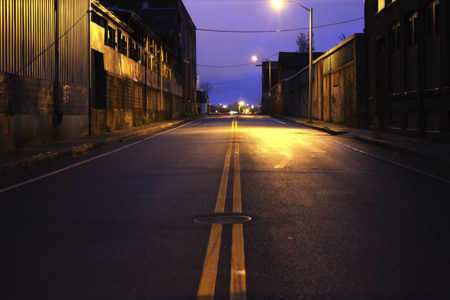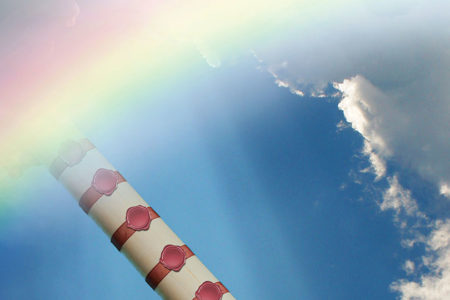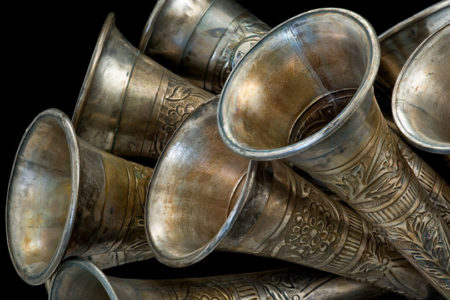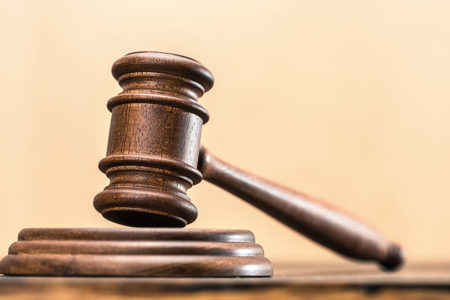Beware the Bowls!
Warning! Danger ahead! Warnings are common today. Highway signs warn of dangerous road conditions. The news media alerts us to tainted food. Healthcare providers caution us about health hazards. You can hardly make a move today without running into a caveat about something.
Perhaps one of the most important warnings came 2,000 years ago from Jesus. Speaking to the multitudes, He declared, “Do not be afraid of those who kill the body, and after that have no more that they can do. But I will show you whom you should fear: Fear Him who, after He has killed, has power to cast into hell; yes, I say to you, fear Him!” (Lk. 12:4–5). A time is coming when God will punish a world that has rejected Him, and people will come face to face with the seven bowl judgments of Revelation 15—16.
The bowls will bring God’s severest wrath on the earth near the end of the seven-year Tribulation. The apostle John’s record of these judgments warns of the final fury yet to overtake humanity from Him who “has power to cast into hell.”
The Courtroom Scene
The revealing of the seven bowl judgments takes place in God’s courtroom in heaven (15:1). It is a fearful thing to be indicted there, for God Almighty is the Judge; and His judgments are righteous, true, and cannot be appealed. Satan and sinful mankind stand indicted before the righteous Ruler of the universe.
Verse 1 announces that this round of judgments will complete God’s wrath, as seven angels hold the “seven last plagues.” The word last connotes bringing something to a full measure.1 The bowl judgments bring to a full measure God’s judgment against Satan and the sin of this age. By completing His judgment of sin, God is preparing Earth for the coming Millennial Kingdom and opening the way for the Messiah’s return.
John called the angels and bowl judgments another “great and marvelous” sign in heaven. The first sign is “a woman clothed with the sun, with the moon under her feet, and on her head a garland of twelve stars”(12:1); and she is about to give birth to a child. She is a picture of God’s marvelous work of redeeming Israel out of this sin-cursed world.
The second sign, a fiery red dragon, represents Satan (v. 3). The third sign, the seven angels and bowls (15:1), embody God’s full measure of judgment against sin.
In God’s courtroom, standing on what looks like a sea of glass mingled with fire, are the martyred Tribulation saints who testify against the accused (v. 2). The fire may picture the earthly trials they endured or the divine judgment about to be unleashed. This location is familiar. The sea of glass was previously seen in 4:6–11 where four living creatures surround God’s throne. Now the martyred Tribulation saints stand before God’s throne, victorious over the Antichrist because they refused to take the mark of the Beast or worship his image.
They worship God with harps and sing the song of Moses (cf. Ex. 15), which celebrates God’s deliverance of Israel over the Egyptians, and the song of the Lamb (Rev. 15:3–4), which praises God for His works, justice, and truth. The song concludes with a declaration of forthcoming universal worship of God.2
The testimony of their lives and unjust deaths are convicting evidence against Satan, the Antichrist, and all who took the mark. God responds by issuing His righteous judgment against them (vv. 5–7).
The Bowls Appear
Out of God’s Temple, His throne room in heaven, come the seven angels “having the seven plagues” (v. 6). The angels are clothed in white linen, signifying their purity and the righteousness of God’s judgment. Their robes are girded by golden bands symbolic of God’s glory, greatness, and majesty.
One of the four living creatures, a servant of the court, conveys God’s judgment to them by giving each a golden bowl filled with God’s wrath (v. 7). The bowls are shallow,3 signifying that it is not the amount of wrath in the bowls but the fact that it is God’s wrath that makes them so dreadful. The golden bowls likewise symbolize God’s glory, greatness, and majesty.
So great is God’s glory and power that the whole Temple is filled with smoke (v. 8), making it impossible for anyone to enter and gain access to God until the seven judgments are completed. All is ready for the bowls to be poured out on the earth. The angels await God’s command to begin.
The Judgments
Chapter 16 begins with God’s command from His temple, “Go and pour out the bowls of the wrath of God on the earth” (v. 1). The trumpet and bowl judgments are similar but not identical. The bowls proceed from the seventh trumpet judgment (11:15) and are not to be poured out simultaneously but, rather, one at a time in quick succession.4
The first five bowls bring extreme suffering and destruction. The sixth brings the world’s armies together for God’s judgment, and the final bowl leaves Earth radically changed.
- First Bowl. Foul-smelling, extremely painful sores break out on all who took the mark of the Beast or worshiped his image (16:2).
- Second Bowl. The seas of the world become like the blood of a dead man; and every creature living in them dies, producing a horrendous stench (v. 3).
- Third Bow. The rivers and springs become blood, leaving only blood to drink. This judgment is a response to the shed blood of the martyred Tribulation saints (vv. 4–7).
- Fourth Bowl. The sun produces such tremendous heat that it scorches people. This plague is all the more intense because the previous plague destroyed mankind’s source of drinking water (vv. 8–9).
- Fifth Bowl. A deep darkness envelops Earth and causes distress so severe people gnaw their tongues (vv. 10–11).
- Sixth Bowl. The great Euphrates River dries up, opening the way for the kings of the East and their armies. Three demons go out: one from Satan, one from the Antichrist, and one from the Antichrist’s False Prophet. They lead the kings of Earth to the Valley of Jezreel in Israel for the Battle of Armageddon (vv. 12–16).
- Seventh Bowl. This final judgment, marked by God’s words It is done! brings lightning, thunder, and a great earthquake unlike any humanity has ever seen. It will reshape Earth’s topography, eliminating islands and leveling mountains. The “great city” (Babylon) will be divided into three parts, and the cities of the nations will be destroyed. Additionally, large hailstones weighing approximately 100 pounds each and measuring about 20 inches in diameter will fall on people (vv. 17–21).5
Sadly, despite all these judgments, people will blaspheme God and refuse to repent (vv. 9, 11, 21). They show no remorse in the face of their well-deserved suffering and pain.
Were God to permit sin to continue on Earth, people would persist in rebelling against Him. God’s judgments teach us that His fierce and mighty wrath is not sufficient for sinners to repent. Only the saving work of the Holy Spirit can open someone’s eyes to the need of God’s infinite grace and mercy.
ENDNOTES
- David M. Levy, Revelation: Hearing the Last Word (Bellmawr, NJ: The Friends of Israel, 1999), 172.
- John F. Walvoord, “Revelation,” The Bible Knowledge Commentary, John F. Walvoord and Roy B. Zuck (Wheaton, IL: Victor Books, 1983), 2:966.
- Levy, 177.
- Walvoord, 2:966.
- Levy, 187.






